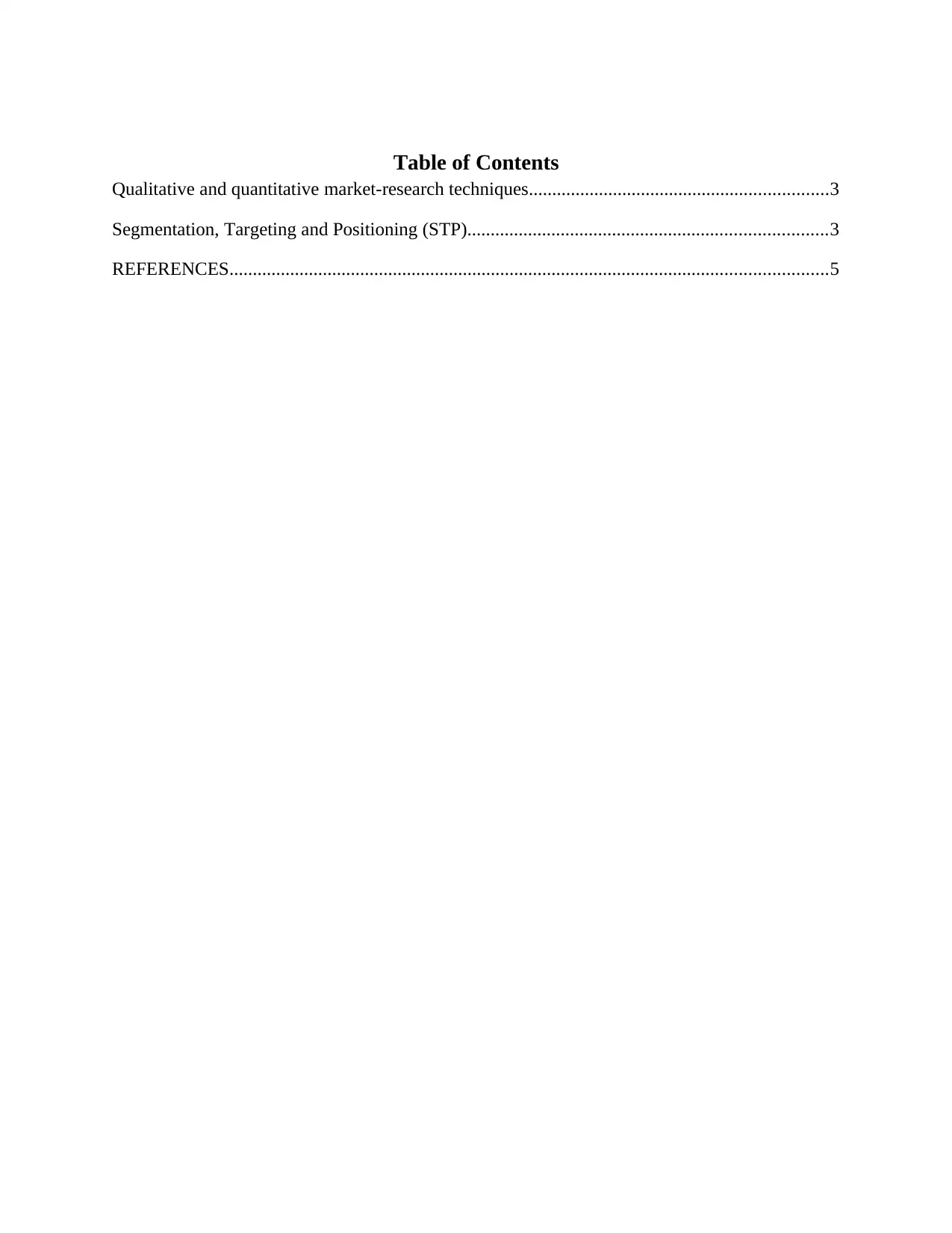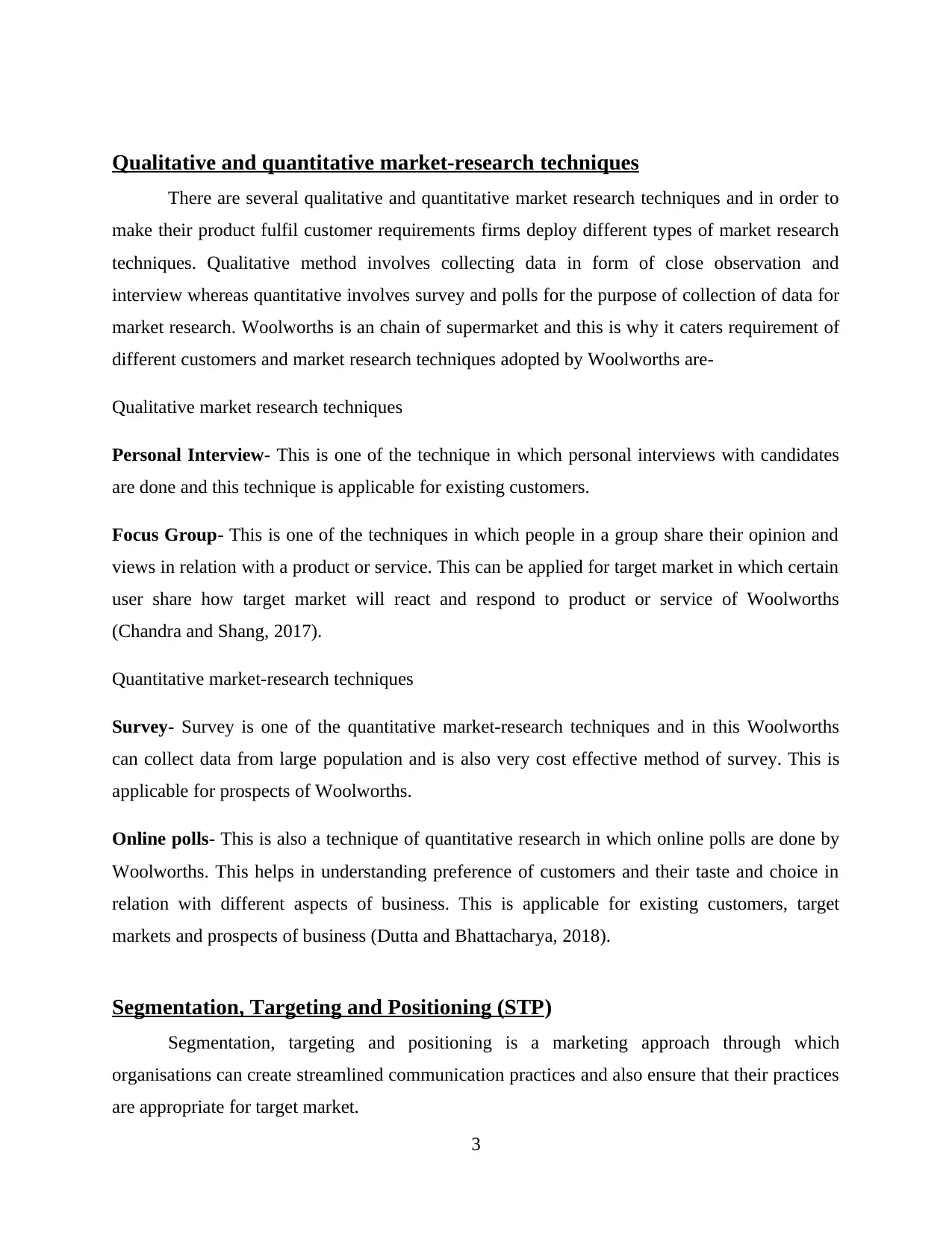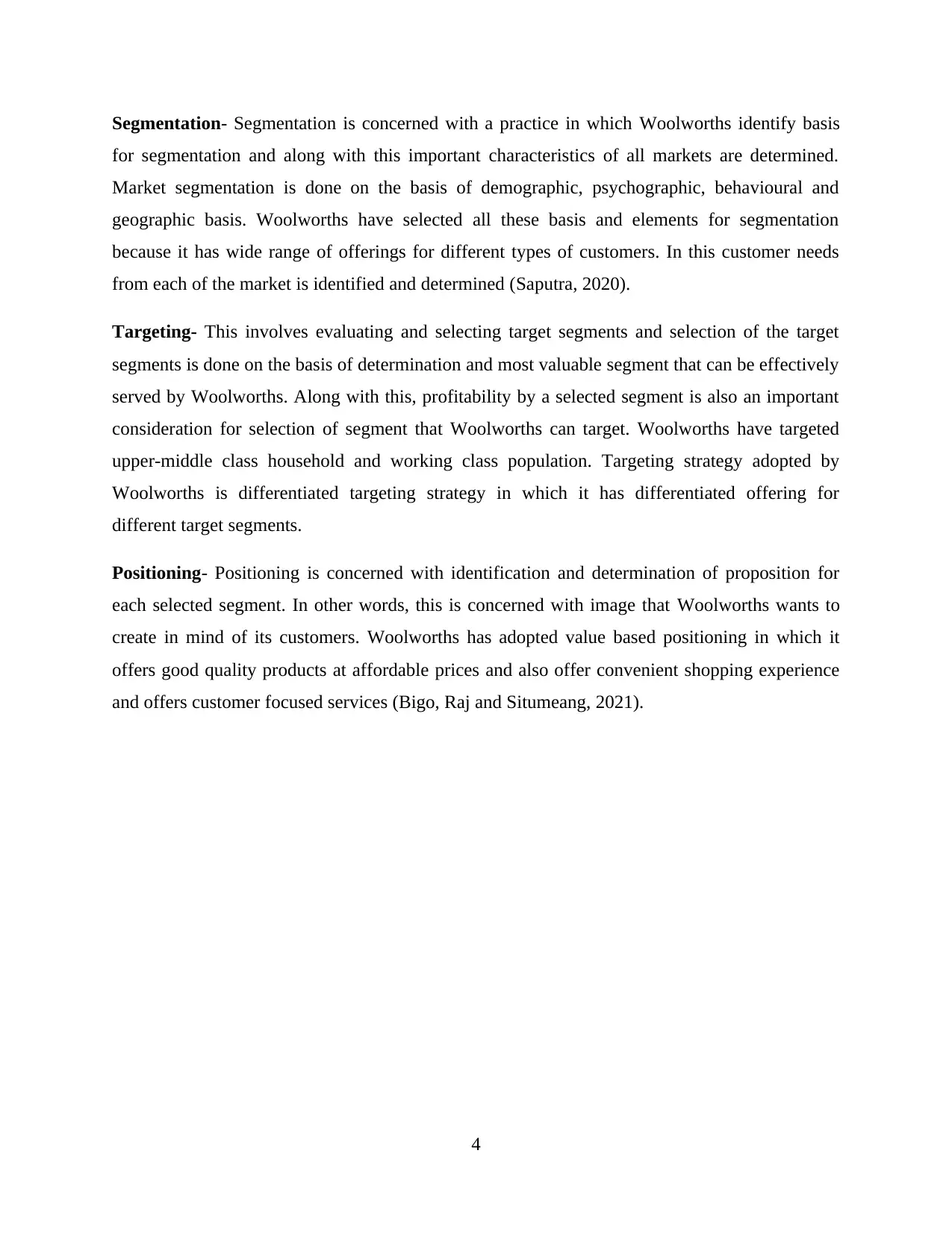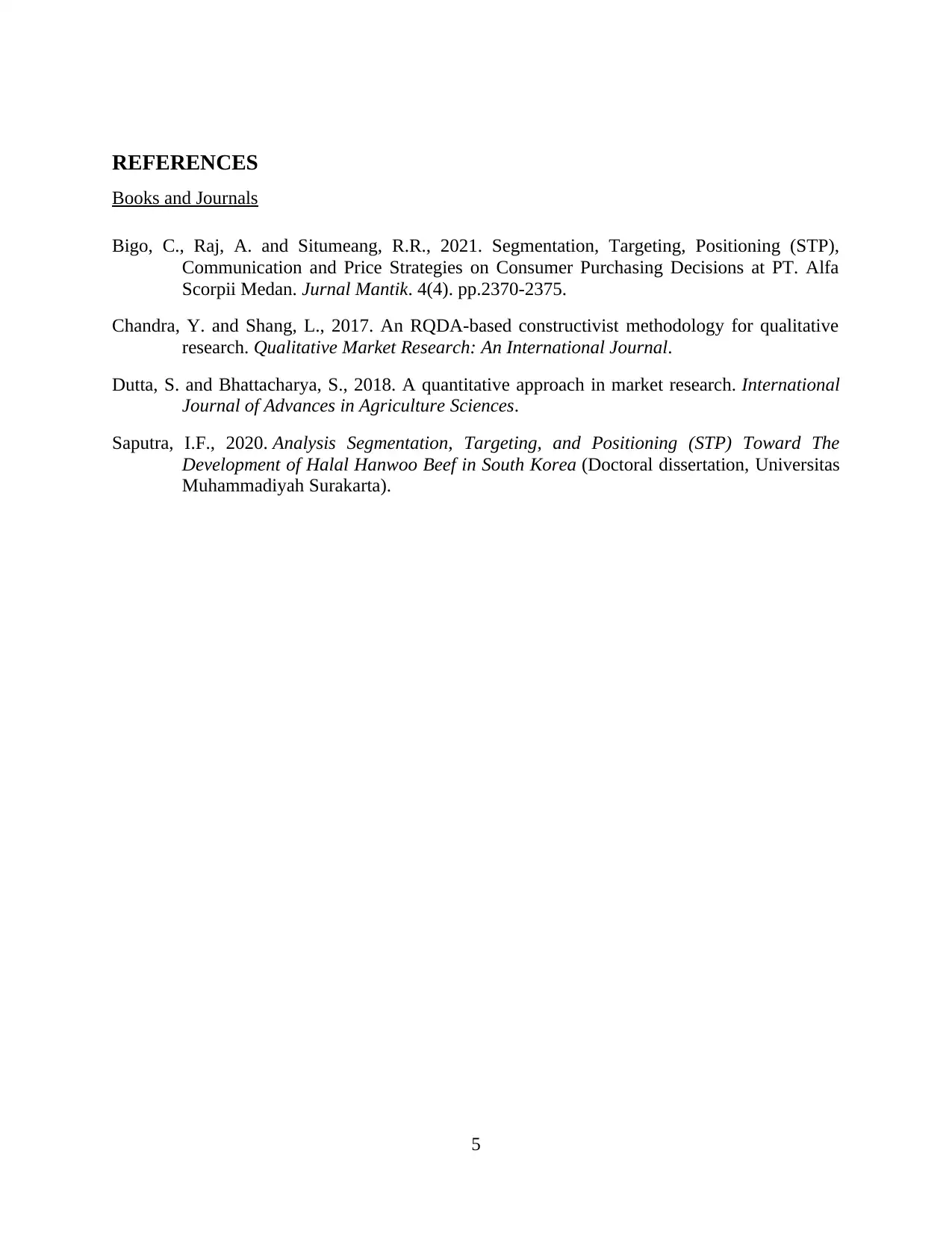Marketing Practice XS4009, Portfolio Task 2: Research and STP Analysis
VerifiedAdded on 2022/11/24
|5
|722
|199
Report
AI Summary
This report provides an analysis of market research techniques and the Segmentation, Targeting, and Positioning (STP) process, with a focus on a case study of Woolworths. The report explores both qualitative and quantitative market research methods, including personal interviews, focus groups, surveys, and online polls, and how these techniques are applied to existing customers, prospects, and target markets. Furthermore, the report delves into the STP process, examining how Woolworths segments its market based on demographic, psychographic, behavioral, and geographic factors, targets upper-middle-class and working-class populations using a differentiated targeting strategy, and positions itself through value-based positioning, offering quality products at affordable prices and a convenient shopping experience. The report references key academic sources to support its findings.
1 out of 5











![[object Object]](/_next/static/media/star-bottom.7253800d.svg)